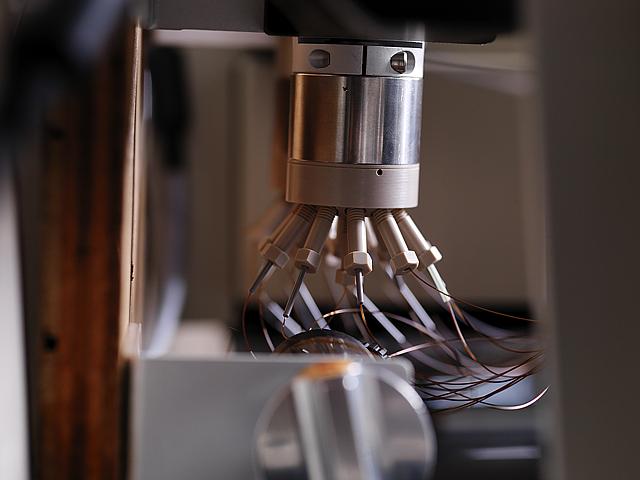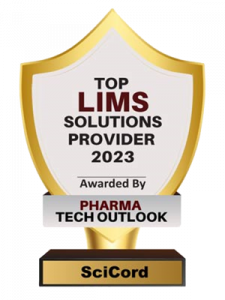Drug Discovery
Applications in Drug Discovery
Mass Spectrometry plays a pivotal role in various stages of drug discovery, offering precise and sensitive analytical capabilities that aid pharmaceutical researchers in making informed decisions. The following sections highlight key applications of MS in drug discovery:
Targeted and Untargeted Screening
MS is widely used for targeted screening of potential drug candidates and their metabolites. Researchers employ MS assays to quantitatively assess the concentration of specific compounds within complex biological matrices. This targeted approach is instrumental in identifying lead compounds, understanding their pharmacokinetic properties, and optimizing their efficacy.
In addition to targeted screening, MS is employed for untargeted screening to discover novel drug candidates. Untargeted MS analyses allow researchers to explore the entire chemical composition of biological samples, identifying unexpected compounds that may exhibit therapeutic potential. This approach is particularly valuable for identifying biomarkers and potential drug targets.
ADME (Absorption, Distribution, Metabolism, Excretion) Studies
ADME studies are crucial in understanding how drugs are absorbed, distributed, metabolized, and excreted within the body. LC-MS/MS is instrumental in assessing drug pharmacokinetics, bioavailability, and metabolic pathways.
Absorption: LC-MS/MS quantifies drug concentrations in blood plasma or serum, providing insights into drug absorption rates and bioavailability.
Distribution: By analyzing tissue and organ samples, researchers can determine the distribution of drugs within the body.
Metabolism: LC-MS/MS aids in identifying drug metabolites and their pharmacological activities. It is particularly valuable in characterizing Phase I and Phase II metabolism.
Excretion: LC-MS/MS assists in assessing drug excretion rates and routes, essential for optimizing dosing regimens.
Pharmacokinetics and Bioavailability
Pharmacokinetic studies rely heavily on LC-MS/MS for quantifying drug concentrations in various biological matrices over time. LC-MS/MS allows researchers to generate concentration-time profiles, facilitating the determination of crucial pharmacokinetic parameters such as clearance, half-life, and area under the curve (AUC). These insights are vital for establishing safe and effective dosing strategies during drug development.
Moreover, LC-MS/MS plays a pivotal role in assessing drug bioavailability, which is the fraction of the administered drug that reaches the systemic circulation unchanged. Bioavailability studies, often conducted via LC-MS/MS, guide formulation development to enhance drug absorption and bioavailability.
Drug Metabolism and Pharmacokinetics (DMPK)
Drug Metabolism and Pharmacokinetics (DMPK) studies are integral to understanding how drugs are processed in the body and how their pharmacological properties are influenced. LC-MS/MS is a cornerstone technology in DMPK research, offering unparalleled sensitivity and selectivity for characterizing drug metabolism and pharmacokinetics.
Quantitative Analysis of Drug Compounds
MS enables precise and quantitative analysis of drug compounds and their metabolites in various biological matrices, including blood, urine, tissue, and plasma. The ability to measure drug concentrations accurately throughout the drug development process is essential for optimizing dosage regimens, assessing bioavailability, and ensuring therapeutic efficacy.
Pharmacokinetic Studies
Pharmacokinetic studies rely on MS to determine how drugs are absorbed, distributed, metabolized, and excreted in vivo. Researchers track drug concentration-time profiles, allowing for the calculation of pharmacokinetic parameters such as clearance, volume of distribution, and half-life. These parameters guide dosing regimen design and help predict drug behavior in clinical settings.
Biomarker Analysis
MS is invaluable in identifying and quantifying biomarkers associated with drug responses, toxicity, and disease states. Biomarker analysis assists in understanding the pharmacodynamics of drugs and predicting patient responses. MS can simultaneously quantify multiple biomarkers in complex biological samples, providing valuable insights into drug efficacy and safety.
Proteomics and Targeted Drug Development
In proteomics, MS identifies and quantifies proteins, facilitating target identification and validation for drug development.
Small Molecule Analysis
MS is used to analyze small molecules, including metabolites and lipids, providing insights into cellular pathways and disease mechanisms.




